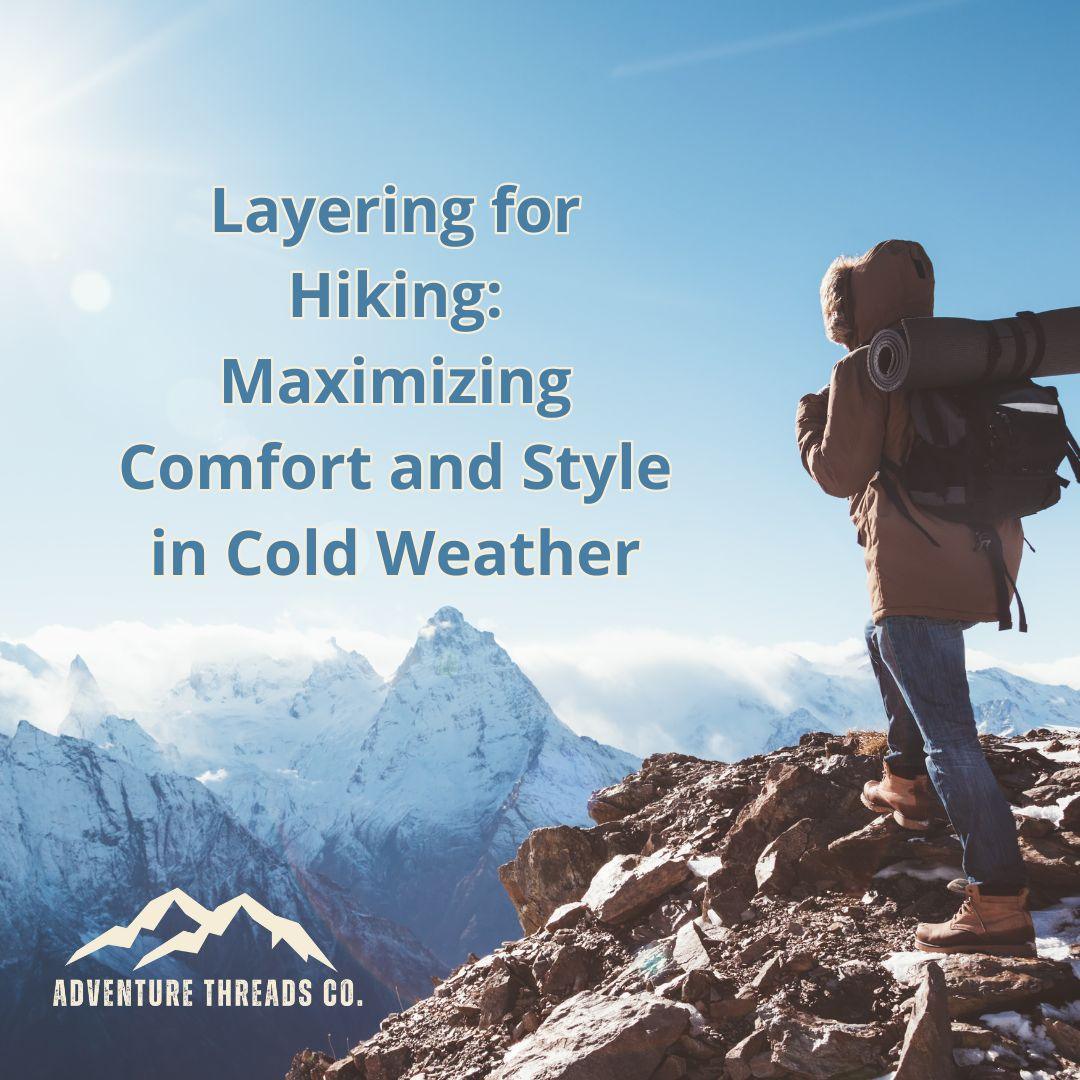
Layering for Hiking: Maximizing Comfort and Style in Cold Weather
Share
As winter knocks at our doors, the call of the wild becomes even more enticing. However, braving the cold requires a bit of strategy, especially when it comes to dressing for outdoor escapades. Fear not, for we're here to let you in on the secrets of mastering the art of layering. Let's ensure you're snug, stylish, and ready to conquer the trails, all while enjoying the crisp, invigorating winter air.
Before we delve into the fashion extravaganza, let's understand why layering is a game-changer for cold-weather hiking:
1. Temperature Regulation: Layers help you regulate your body temperature effectively. You can easily adjust by adding or shedding layers as needed during your hike.
2. Moisture Management: Layering allows moisture to wick away from your body, keeping you dry and comfortable. Wet clothing in cold weather is a no-go.
3. Insulation Efficiency: The layering technique traps warm air between layers, providing efficient insulation against the cold.
4. Versatility: Different combinations of layers cater to various weather conditions, giving you the flexibility to adapt to changing climates.
Now, let's break down the layers and dress you up for that stylish and toasty winter hike.
1. Base Layer: Your Comfort Foundation
Pros:
- Moisture-Wicking: Draws sweat away from your skin.
- Keeps You Dry: Essential for staying warm and comfortable.
- Body-Hugging: Fits like a second skin, providing ease of movement.
Materials:
- Synthetic Fabrics: Polyester or polypropylene.
- Merino Wool: A natural and cozy choice.
2. Mid Layer: Adding Warmth and Insulation
Pros:
- Insulation: Traps heat to keep you warm.
- Breathability: Allows moisture to escape.
- Soft and Comfy: Adds a cozy layer against your skin.
Materials:
- Fleece: Synthetic and excellent at trapping heat.
- Down: Lightweight and incredibly warm.
- Synthetic Insulation: Mimics down but retains heat when wet.
3. Outer Layer: Weather Resistance and Protection
Pros:
- Weatherproofing: Shields against wind, rain, and snow.
- Breathability: Allows moisture to escape while blocking external elements.
- Versatility: Can be removed or added as per changing weather.
Materials:
- Gore-Tex: Provides waterproofing and breathability.
- Softshell: Water-resistant and breathable.
- Hardshell: Completely waterproof and windproof.
4. Accessorize for Maximum Warmth and Style
- Head: Don a beanie or a balaclava to keep your noggin warm.
- Hands: Insulated gloves or mittens are a must to keep those fingers functional.
- Feet: Thick, moisture-wicking socks and waterproof boots will be your best friends.
Fashion Meets Functionality: Putting It All Together
- Start with Your Base: Wear moisture-wicking, snug-fitting base layers that hug your skin comfortably.
- Add the Mid Layer: Depending on the temperature, choose an appropriate mid-layer for insulation. Fleece or down jackets work wonders.
- Top it Off with the Outer Layer: Bring out your weather-resistant jacket to shield against the elements. Ensure it's breathable for comfort.
- Don't Forget Your Bottom Half: Opt for moisture-wicking leggings or hiking pants as your base, adding fleece-lined pants or insulated outer layers for warmth.
- Accessorize for Warmth: Put on your beanie, gloves, and the warmest, coziest socks. Don't underestimate the power of these accessories.
Layering isn't just about functionality; it's about showcasing your style amidst the wilderness. Experiment with colors, patterns, and textures to create a winter hiking look that's as bold as your adventurous spirit.
Remember, the key to a successful winter hike is staying warm and comfortable without compromising on style. So, gear up, layer up, and hit the trails with confidence. Winter is waiting, and you're about to conquer it with flair and fashion!
Happy adventuring!
